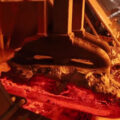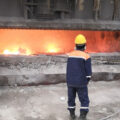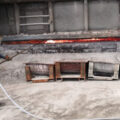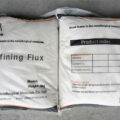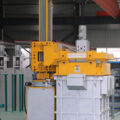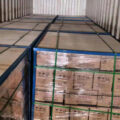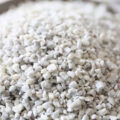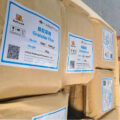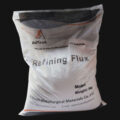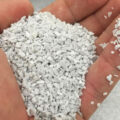Aluminum Purification in Furnace is one purification method for aluminum and aluminum alloy, other purification method is external purification. At present, mixed gas and flux refining, ceramic foam filter filtration and purification are widely used in China. Some large aluminum processing plants have also introduced on-line degassing and filtering devices to further improve the melt quality.
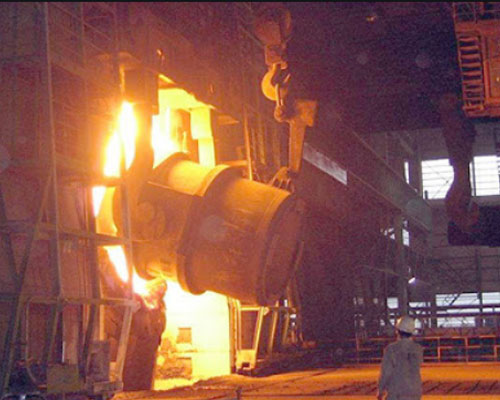
Aluminum Purification in Furnace
Aluminum Purification in Furnace
Nitrogen purification: the chemical property of nitrogen is not active, and it does not react with molten aluminum and other dissolved gases at refining temperature, and is not soluble in aluminum melt. A large number of bubbles can be formed by injecting nitrogen into liquid aluminum. In these nitrogen bubbles, the hydrogen partial pressure is equal to zero, so the hydrogen in the melt will diffuse to the bubble, thus removing the gas from the melt. In the process of bubble floating, the inclusion adheres to the bubble surface due to the surface tension when encountering the inclusion, and finally the bubble carries the inclusion to the slag on the surface. It can be seen that the inclusions are removed as well as the gas. The refining temperature should be controlled within 690 ~ 710 with nitrogen degassing. If the temperature is too high, nitrogen may react with aluminum. The nitrogen pressure is controlled in the range of 10 ~ 15kpa.
Nitrogen purification is not suitable for magnesium alloy, because mgn2 can be generated at refining temperature, which affects the alloy content, and the degassing effect of nitrogen is not complete.
Chlorine purification: chlorine is insoluble in aluminum alloy melt, but can form aluminum chloride with aluminum. Chlorine can also react with hydrogen in the alloy to form volatile hydrogen chloride. Some chlorine gas also escaped in gaseous state. These gases float up from the liquid aluminum in the form of bubbles, and the removal of gas and slag is effective. However, chlorine is toxic, harmful to human health and seriously corrodes the surrounding equipment. Therefore, it is necessary to have good ventilation and protection equipment.
Mixed gas refining: nitrogen purification effect is poor, chlorine gas is harmful to the environment and equipment, so at present, mixed gas purification is often used to improve the purification effect and reduce its harmful effect. There are two gases, nitrogen and chlorine.
Flux purification: flux refining is mainly achieved by adsorption and dissolution with oxide inclusions in flux. The commonly used refining agent is based on chloride, adding fluoride, such as CaF2, to absorb and dissolve Al2O3, so as to achieve the maximum purification effect.
During refining, adjust the liquid aluminum temperature to 20 ~ 30 ℃ higher than the pouring temperature. The flux is spread on the surface of the molten aluminum alloy. Because the density of the flux used in the aluminum alloy is smaller than that of the liquid aluminum, they all float on it. Stir for 5 ~ 10mi, then stand for 5 ~ 10min, then remove the slag on the alloy and sprinkle with covering agent, and then pour after refining.

